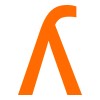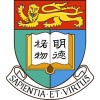
Assessment of the Functional Impact of a Close-loop Controlled Prehension Neuroprosthesis in Post-stroke...
StrokeThe aim of the PREHENS-STROKE study is to propose a functional replacement device to restore grip capacities in patients with hemiparesis after stroke, unable to actively open the hand to seize objects. The main objective is to evaluate the impact of the use of a self-controlled prehension neuroprosthesis on the ability to perform a standardized grasping task, consisting of grasping, relocating and releasing a glass (palmar grasp) or a spoon (key-pinch), compared to a condition without the use of the prehension neuroprosthesis.

Analysing the Effects of Xingnaojing for Mild-to-severe Acute Ischemic Stroke
Acute StrokeIschemic StrokeThe main purpose of this trial is to analyse the Effects of Xingnaojing for Mild-to-severe Acute Ischemic Stroke by Metabonomics, proteomics and clinical parameters.

A STudy of Upper Arm Rehabilitation in Stroke Survivors- ASTAR
StrokeUpper Limb Injury1 moreThis feasibility study will explore the clinical effectiveness of additional upper limb therapy compared to standard care delivered to Stroke Survivors at Sussex Rehabilitation Centre (SRC). Randomization via sealed envelope will allocate treatment group to either routine care or upper limb training for self-management plus routine care. If randomized to upper limb training, a patient will undertake 10 therapy sessions with an instructor from the Action for Rehabilitation for Neurological Injury (ARNI) program during their hospital stay. The last two ARNI-led sessions will be filmed by a nurse/carer on either their own tablet/phone or an i-pad. Participants in the ARNI group will be encouraged to continue doing their personalized exercises while in hospital and continued at home. The participants in the ARNI group will also be given a task-training board to take home. This randomized controlled trial will measure outcomes of each group over six months. Each patient in the study will have upper limb physical measurements taken by a blinded Research Nurse (RN2) at baseline. Research Nurse (RN1) will gather data in a Clinical Report File from a weekly exercise diary completed by the patient or carer and well-being questionnaires. On discharge, RN2 will conduct upper limb measurements, collect completed hospital diaries and issue new ones to take4 home. RN1 will give a weekly phone call or text reminders so that patients to complete exercise diaries at home. At 6 months RN2 will do final measurements and complete patient questionnaires in an out patients clinic visit. The investigators aim to recruit 36 patients and anticipate 30(8.3%) will complete the 6 month follow-up. The study sponsor will be the University of Sussex. However, as the study is run in rehabilitation unit in an NHS hospital, University Hospitals Sussex NHS Trust will host the study.

Validity of the Kinect™ Sensor for Measuring Range of Motion in Patients Post-stroke and Healthy...
StrokeHealthyThe aim of this research is to investigate the validity of the Kinect™ sensor in post-stroke patients and in healthy test subjects during analytic and functional movements. Measurements will be compared with the Vicon-camera system (currently seen as the golden standard).

CoHort of Patients to Identify Biological and Imaging markerS of CardiovascUlar Outcomes in Stroke...
Ischemic StrokeIschemic stroke is the first cause of acquired disability of the adult, the second cause of dementia and the third cause of death in the industrialized countries, what constitutes à major public health issue. Stroke is characterized by a cerebral parenchymal lesion due to an ischemic mechanism (85% of the cases) or hemorrhagic mechanism (15%). For a long time, the only approved treatment was the intravenous thrombolysis (rt-PA). Recently, thrombectomy has proven its superiority in this pathology. Cohorts of patients with stroke are rare but can be very valuable by their clinical, laboratory and imaging well documented. They are the source of new hypotheses for research or interventions as well as the quality of care assessment tool. The main objective of this project is to identify new markers: biological and imaging, treatment response and prognosis after ischemic stroke. Secondary objectives of the HIBISCUS-STROKE II cohort are to establish a clinical database, completed by biological samples and by imaging data that can be used in the following areas: Descriptive epidemiology of ischemic stroke and cerebral reperfusion, Pharmacoepidemiology and treatments observatory: safety, efficacy, indication of treatment in real life, costs Assessment of the long-term effect of the treatment on the occurrence of disability, stroke recurrence and death, Quality of life and personal, familial, professional and social consequences of stroke, Research of new diagnostic and prognostic biomarkers, Research projects. Ancillary study : Cardiac complications are the second leading cause of death after stroke. A close relationship between brain damage and heart complications, referred to as "neuro-cardiac syndrome" has been established. 20% of patients admitted for ischemic stroke present at least one major cardiac event, including acute coronary syndrome, heart failure and / or cardiac arrhythmia, within three months of the event, while 28% have a left ventricular ejection fraction less than 50%. However, the underlying pathological mechanisms remain unclear and the therapeutic targets unknown. To study these mechanisms, an ancillary study will be proposed to patient whom accepted to participate in the main project research. The general objective of the ancillary study is to identify early markers of cardiac damage during ischemic stroke having benefited from mechanical recanalization by thrombectomy, and to improve the understanding of the pathophysiology at the origin of cardiac complications in the course of an ischemic stroke with the final objective of identifying new therapeutic targets.

Clinical Implications of FKBP5 in Stroke
StrokeWith contemporary lifestyle changes and global aging, it is important yet unknown how stress interacts to post-stroke outcomes. This proposal aims to study the link between the stress-responsive FKBP51-related pathways and neural plasticity after stroke, elucidating FKBP5 gene polymorphisms and blood FKBP51 regulation in relation to brain excitability and functions, understanding the effects of transcranial direct current stimulation, and characterizing brain mechanisms for individualized early rehabilitation after stroke.

Analysis of the Psychometric Properties of Kinematic Parameters of Locomotion Measured by Inertial...
Cerebral Vascular AccidentStroke is the leading cause of acquired disability in adults in France, and more than 500,000 French people are currently living with the after-effects. Hemiparesis, which is a partial deficit of motor or muscular control affecting the right or left half of the body, is the most frequent motor disorder after a stroke. Currently, the management and treatment of stroke patients consists of a combination of pharmacological treatments (drugs, botulinum toxin, etc.), the fitting of devices (orthoses, etc.) and rehabilitation (physical therapy, adapted physical activity, occupational therapy, etc.). According to the French National Authority for Health, motor rehabilitation after a stroke must meet 3 criteria: early, intensive and continuous. Functional evaluations (with validated measurement scales or analysis of locomotor activities) make it possible to monitor rehabilitation and to verify that the intensity is adapted to the patient's needs. To date, technological advances have yielded numerous gait analysis devices, ranging from motion capture platforms to inertial measurement units (IMU) and the use of motion platforms with integrated sensors. Different systems embedding an IMU on the foot, for example, answer these problems of analysis of walking in real situation. The IMUs record the movements and orientation of the foot in space; the data are then processed by algorithms to recognize the walking steps and calculate the spatiotemporal locomotion parameters. Additional IMUs positioned on the body can be added to this system in order to access a more precise analysis of locomotion, in particular by calculating the movements of the various joints of the lower limb. The validation of systems integrating IMUs must be done according to a precise method widely documented by the COSMIN recommendations (COnsensus-based Standards for the selection of health Measurement INstruments). This project will be carried out in two stages, the first of which will evaluate the safety and psychometric properties of the spatiotemporal parameters of the IMU devices in healthy subjects. If these properties (safety, reproducibility and validity) are considered to be in conformity, the second phase will be initiated. These same parameters will be evaluated during the rehabilitation of a cohort of patients who have suffered a stroke.

A Nursing Support Intervention-based Project for Stroke Survivors
StrokeStroke is the second single most common cause of death and the main cause of disability in the European Union (EU) region. Stroke victims face an uncertain future and a life severely affected by disability. Although there have been many advances in scientific knowledge and innovation in stroke research, improvements in stroke systems of care are still necessary to ensure patient outcomes and improve their quality of life after stroke. The main goal of PROICTUS program ("pro" in Greek means before and in Latin means forward movement) is to evaluate a nursing support intervention to improve PROMS (patient reported outcome measures) and the quality of life in stroke survivors. Patients will have a directly contact with the lead nurse by telephone, so they will receive information about their disease, their current situation given them a personalized care and resolving questions that are important for them in their new life situation

Real-time Neuromuscular Control of Exoskeletons
StrokeThe purpose of this study is to develop a real-time controller for exoskeletons using neural information embedded in human musculature. This controller will consist of an online interface that anticipates human movement based on high-density electromyography (HD-EMG) recordings, and then translates it into functional assistance. This study will be carried out in both healthy participants and participants post-stroke. The researchers will develop an online algorithm (decoder) in currently existing exoskeletons that can extract hundreds of motor unit (MU) spiking activity out of HD-EMG recordings. The MU spiking activity is a train of action potentials coded by its timing of occurrence that gives access to a representative part of the neural code of human movement. The researchers will also develop a command encoder that can anticipate human intent (multi-joint position and force commands) from MU spiking activity to translate the neural information to movement. The researchers will integrate the decoder with the command encoder to showcase the real-time control of multiple joint lower-limb exoskeletons.

Ecological Momentary Intervention for Stroke Caregivers' Psychological Support
StrokeCaregiver Burnout3 moreThe proposed trial aims to evaluate the effectiveness of internet-delivered cognitive behavioural therapy (iCBT) based ecological momentary intervention (EMI) for psychological well-being in stroke family caregivers.
